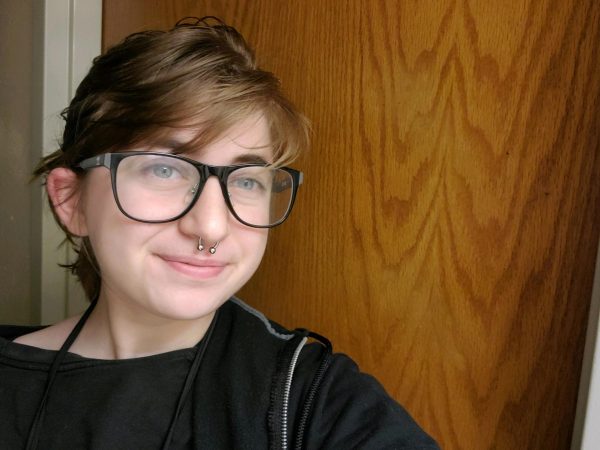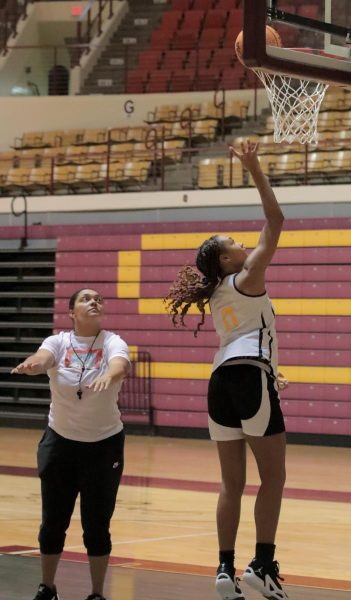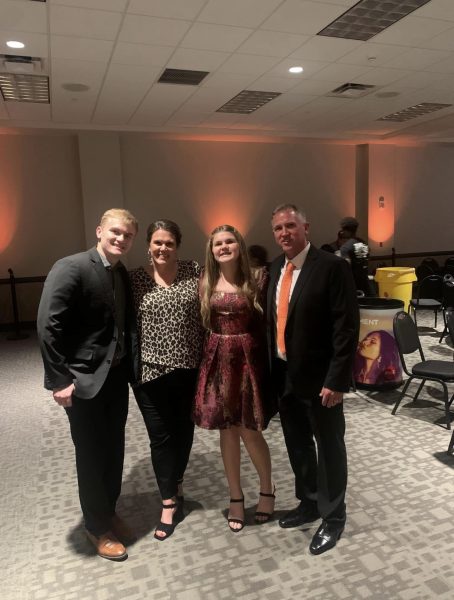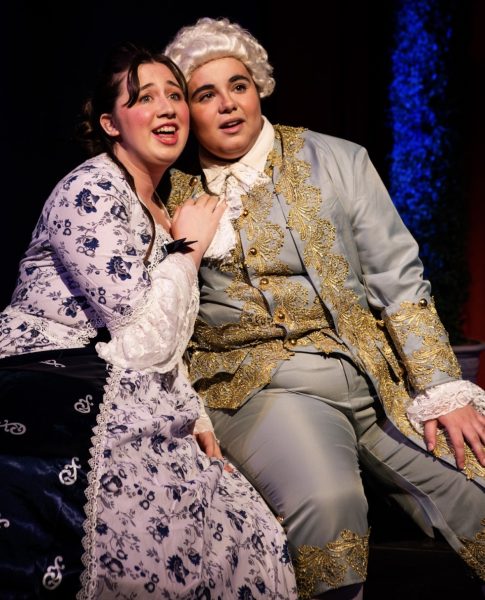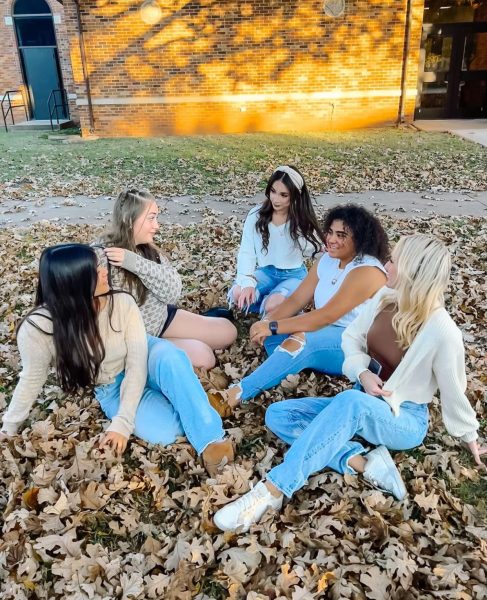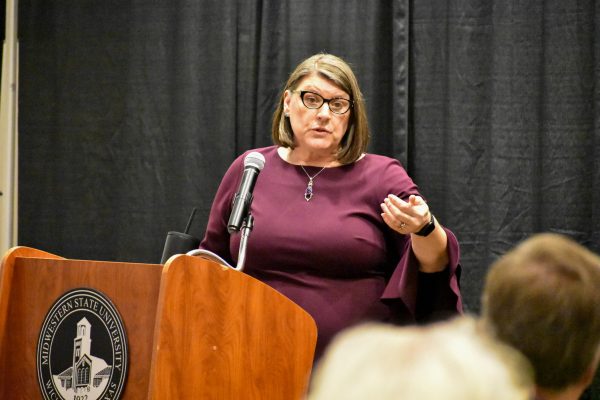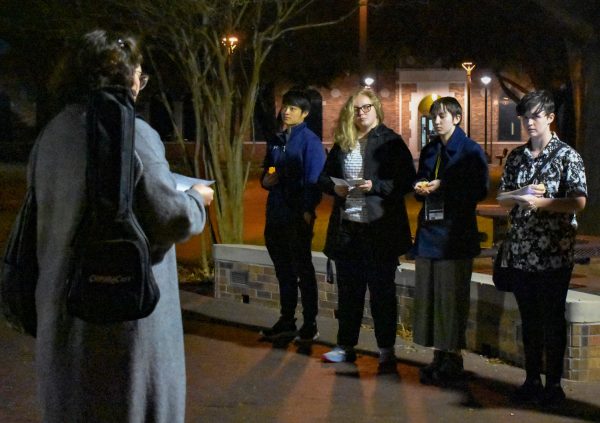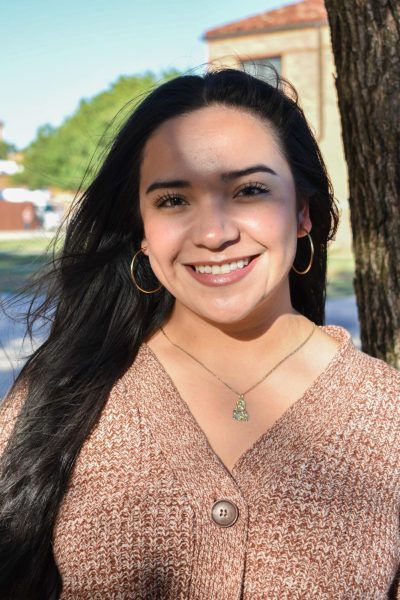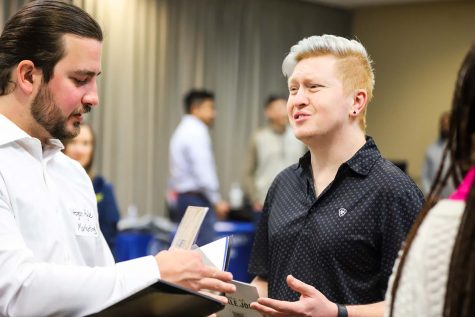MSU Texas and Wichita Falls Ballet Theatre Hosts 3rd Annual Signature Series
As part of a discussion on theater, Mishic Marie Liberatore, artistic director at the Wichita Falls Ballet Theatre, explained the history of the 56-year-old non-profit theater that was started by Czechoslovakian immigrants Frank and Irina Kladivova started.
“We are a ballet centric theater but the signature series is one of the performances were we get to step outside of ballet,” Liberatore said. “And explore different movements further than nutcrackers or your typical two act classical ballet.”
Liberator added that this theater was a great opportunity for her dancers and the audience to observe and celebrate Black History Month and African American Heritage Month.
“It is important in our society that we learn about all different cultures,” Liberatore said. “And I think that being about to celebrate African American History Month during February by bringing in the Dallas Black Dance Theatre, having our kids experience was incredible.”
Valentine Liberatore, executive director of the WFBT explained the diversity among the ballet performers.
“We have pre-professional students ages 10 through 24 years old. There are 24 members in company. And they will be dancing in the first half of the show, along with Dallas Black Dance Theatre,” Liberatore said.
Liberatore also explained the collaboration piece between the WFBT and Dallas Black Theatre: How to Kill a Ghost, which represented a breakup. He also said the second act will include Odetta, which is a story outlining the history of the African American experience, including slavery.
“Thanks to a collaboration with the Wichita Falls Alliance for Arts and Culture, we are able to collaborate with Dallas Black Dance Theatre in Wichita Falls, to do two pieces: How to Kill a Ghost and in the second half it would be all Dallas Black Dance Theatre performing Odetta,” Liberatore said.
Liberatore said this was the first time Dallas Black Theatre performed Odetta.
“They’ll do it in the metroplex this weekend but it’s being premiered here before even in Dallas,” Liberatore said.
Liberatore said the best part of performing on campus was the Fine Arts Theatre. He also said that performing in this venue did not have the challenges of performing in a larger venue.
“There’s no bad seat in that theatre and it is a very intimate setting,” Liberatore said. “You’re very close and up-close with the dancers compared to Memorial Auditorium, which is a much bigger venue but you’re further back due to a giant orchestra pit.”
Liberatore also said another benefit of this smaller venue is that the front row can become, what he refers to as the “Splash Zone.”
“You’re sitting right in front of the stage and the dancers’ set can sometimes hit you,” Liberatore said.
Liberatore said the attendance for both Friday and Saturday were very high. There was also many attendees that did not reserve a ticket. Because of this, he said that he was worried that he might have to turn some potential attendees down due to low capacity.
“We were almost completely full. I think they were maybe less than 20 seats available for the show,” Liberatore said. “And right now, we have a lot of walk up but we’re scheduled to have over 350. The house seats 450. But if we have anticipated walkup like we did yesterday, I’m afraid we might have to turn some patrons away since we’ll have no seats available.”
Alexis von Gilleland, biology sophomore, was one of the students have attended the ballet. She said she enjoyed the first scene which included younger ballet performers.
“My favorite experience was probably watching the little kids because they were adorable and made me smile,” Gilleland said.
Gilleland also said “How to Kill a Ghost” was her favorite piece since she thought the dresses the young performers were wearing were beautiful.
“I loved watching the kids who were inexperienced and scared. Then later see what the kids could one day do if they keep up with the talent,” Gilleland said.
Gilleland said that this was one of her first experiences attending a ballet at this magnitude. She also said that it was a good way to begin the month of African American Heritage Month.
“I believe it is a good experience for black history month because I got to see something I never would have seen on my own volition,” Gilleland said. “Watching the Dallas black theatre was amazing and such an amazing experience.”
Although the tickets were $20, students received a $10 discount if they showed their school IDs. Gilleland appreciated the discount, saying that she would not have been able to afford it without it.
“I greatly appreciated the $10 student ticket price because I know events like these are very expensive. I am a student so I am broke and without that student discount I would never be able to experience the ballet.”
Gilleland said she will return to another ballet, especially one here on campus.
“I would love to go to another ballet. Especially if they are held by the school and I have a student discount,” Gilleland said.
Melissa M. Young, artist director at the Dallas Black Dance Theatre said that were favorite experience was being a part of the Wichita Falls community. She also said that she enjoyed the conversations that were had.
“My favorite part is showcasing who and what Dallas Black Dance Theatre is,” Young said. “What we’re about and how we mesh into any community so easily.”
When comparing Friday and Saturdays performances, Young said that it the beauty of live art is that no two performances are ever alike. However she said that the audiences reactions both days were very much similar.
I say that both performances were the same in terms of the consistency in how the dancers performed,” Young said. “As well as how the audience responded to what they had to present. The dancers had a terrific experience and the audience clearly loved what we had to offer.”
Young said that the event was successful because the collaboration between the Fain Fine Arts Staff, the Wichita Falls Alliance for Arts and Cultures, Wichita Falls Ballet Theatre, and Dallas Black Dance Theatre.
“We all came together because we know what type of work we want to produce: excellent work,” Young said. “And we want to speak to the audiences through the movement. So all of us working together and choreographing each of our parts as individuals is really what made turnout the way it did.”
Other than adding more performances and returning on an annual bases, Young said that she would not change anything about the Signature Series.
“Deep in my heart, I feel we will return because of the way your community responded,” Young said. “Art touches the soul and we need art in our everyday lives. Dallas Black Dance Theatre returning, I have a really good feeling about it.”




